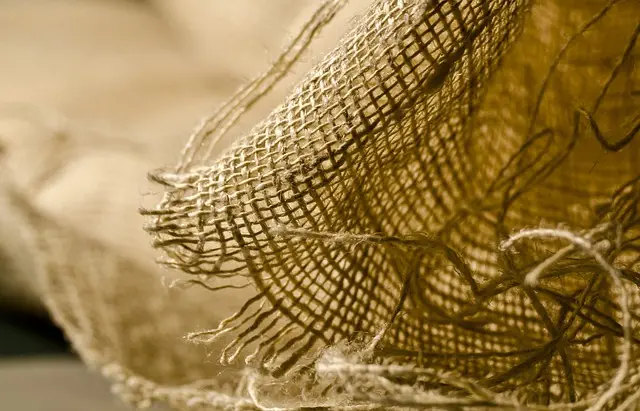Muscle soreness, known as delayed-onset muscle soreness (DOMS), typically sets in 24 to 72 hours after intense exercise or new physical activities due to microtrauma and the body's inflammatory response. This is a natural part of the adaptation and repair process that leads to muscle growth. To manage DOMS, strategies such as stretching or yoga can be integrated into routines without compromising gains in mobility and flexibility. Additionally, making kava, a traditional Pacific Islander practice, may aid in alleviating muscle soreness by leveraging its analgesic and relaxing properties, thanks to its active compounds called kavalactones. These substances modulate pain perception and are believed to affect neurotransmitter activity in the brain. It's important to consume kava responsibly and consider personal health factors for optimal benefits. When combining kava with workouts, it's crucial to choose exercises that minimize injury risk and include activities that promote recovery, such as bodyweight exercises and gentle cardio. This balanced approach ensures the body can heal effectively, combining the advantages of targeted exercise and natural kava consumption for a comprehensive recovery process.
Muscle soreness can be a persistent challenge for those committed to maintaining an active lifestyle or pursuing fitness goals. This article delves into the science of muscle soreness and its effects on workout regimens, offering insights on how to effectively manage this discomfort. We explore the role of Kava, a natural compound, in providing relief from muscle soreness, and guide readers through the process of making kava into a beverage that can enhance recovery. Furthermore, we provide tailored workout advice that complements Kava consumption for optimal healing and continued progress. By integrating this holistic approach with strategic exercise planning, you can mitigate soreness and keep your fitness journey on track.
- Understanding Muscle Soreness and Its Impact on Workout Plans
- The Role of Kava in Alleviating Muscle Soreness: A Natural Approach to Pain Relief
- Designing a Customized Workout Plan to Complement Kava Consumption for Optimal Recovery
Understanding Muscle Soreness and Its Impact on Workout Plans

Muscle soreness, commonly referred to as delayed-onset muscle soreness (DOMS), can be an inevitable consequence of intense physical activity or unfamiliar exercises. It typically manifests 24 to 72 hours post-workout and is characterized by pain, tenderness, or stiffness in the affected muscles. This response is a natural inflammatory reaction to microtrauma incurred during the training session, where the body adapts and repairs itself, leading to muscle growth. Understanding the mechanisms behind muscle soreness is crucial for tailoring workout plans that minimize its impact without compromising progress. For instance, incorporating restorative exercises like stretching or yoga can aid in recovery while maintaining mobility and flexibility. Moreover, activities that involve making kava, a traditional Pacific Islander ritual known for its relaxing and pain-relieving properties, may be beneficial for muscle relaxation and reducing soreness. Engaging in this practice post-workout could potentially enhance the body’s natural healing process and provide a holistic approach to managing exercise-induced muscle pain. It’s important for individuals to listen to their bodies and adjust their workout plans accordingly, ensuring that they balance the stimulus for growth with adequate recovery time to prevent overtraining and injury.
The Role of Kava in Alleviating Muscle Soreness: A Natural Approach to Pain Relief

When engaging in intense physical activity, muscle soreness can be a common and sometimes debilitating experience. Traditionally, over-the-counter pain relievers are often turned to for relief. However, an increasing number of individuals are exploring natural alternatives to manage this discomfort, with making kava a focal point in their wellness routines. Kava, a brew derived from the root of the Piper methysticum plant, has been traditionally used in Pacific cultures for its calming and pain-relieving properties. Emerging scientific research supports the use of kava for alleviating muscle soreness, with particular focus on its active components known as kavalactones. These compounds are believed to interact with neurotransmitters in the brain, leading to a reduction in pain signals emanating from overworked muscles.
The preparation and consumption of kava can vary, with different methods influencing its efficacy for pain relief. For instance, making kava into a traditional drink involves soaking the roots in water and then grinding them, which releases the active ingredients. This process is crucial for creating a potent beverage that can effectively target muscle soreness. While the taste of kava can be an acquired one, its benefits are drawing attention as a viable alternative to synthetic painkillers. It’s important to approach the use of kava with care, adhering to recommended dosages and considering individual health considerations, especially when used alongside other medications or in conjunction with physical therapy for muscle recovery. By incorporating kava into a regimen designed to combat muscle soreness, individuals may find themselves with a more natural and potentially effective pathway to pain relief.
Designing a Customized Workout Plan to Complement Kava Consumption for Optimal Recovery

Crafting a workout plan that synergizes with kava consumption for muscle soreness relief requires a nuanced understanding of both exercise science and the pharmacological effects of kava. Kava, a beverage made from the root of the Piper methysticum plant, is traditionally used in certain cultures for its sedative and anxiolytic properties. When incorporating kava into a workout regimen, it’s imperative to consider its influence on motor control and balance, which can be affected by higher doses. A customized workout plan should thus focus on exercises that minimize the risk of injury while promoting relaxation and recovery.
For those engaging in ‘making kava,’ as it is colloquially known, it’s advisable to pair light to moderate resistance training with cardiovascular activities. Resistance exercises like bodyweight squats, lunges, and push-ups can be effectively combined with low-impact cardio such as swimming or cycling. These activities not only help in alleviating muscle soreness but also enhance the overall quality of recovery by promoting blood flow and nutrient delivery to tired muscles. The key is to balance the intensity of the workout with the effects of kava to achieve a state where the body can repair itself effectively, leading to optimal recovery and sustained muscle health.
Muscle soreness can be a significant hurdle for individuals aiming to maintain an active lifestyle. This article has explored the nature of muscle soreness, its effects on workout routines, and the potential benefits of incorporating Kava into a recovery regimen. Making kava part of your routine, as detailed in our guide, can offer a natural alternative to traditional pain relief methods, potentially enhancing muscle recovery without the side effects often associated with pharmaceuticals. By customizing workout plans to complement kava consumption, individuals can optimize their recovery process and mitigate the impact of soreness on their fitness journey. Tailoring these approaches to personal needs ensures a more effective and sustainable strategy for those seeking relief from muscle soreness.






